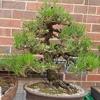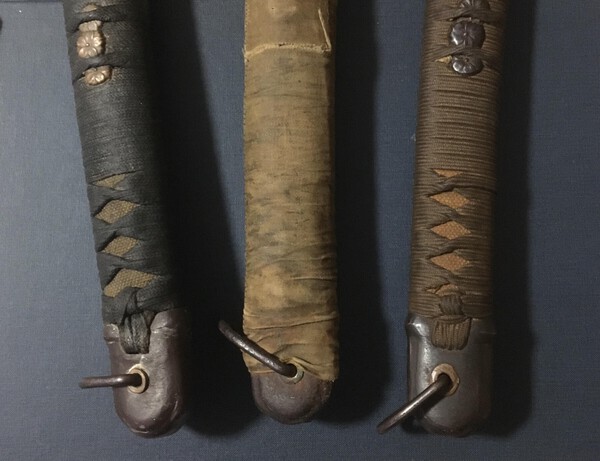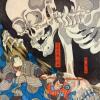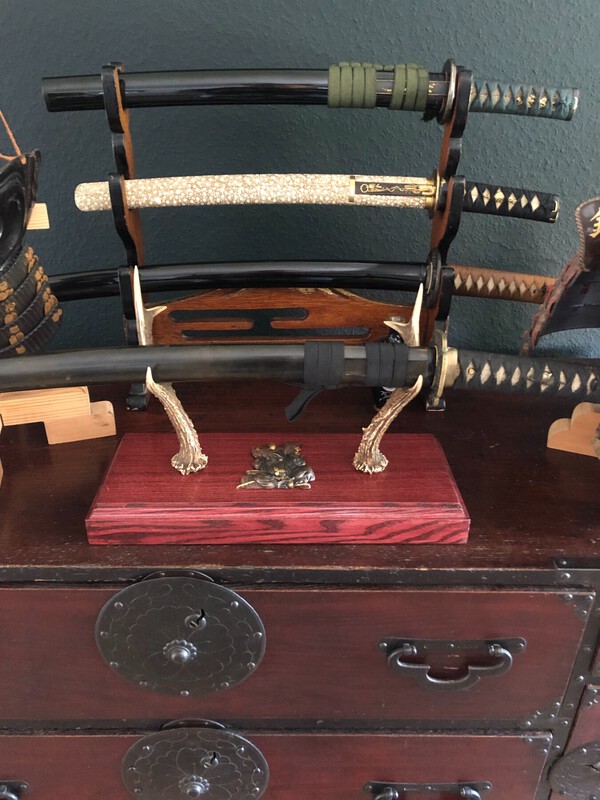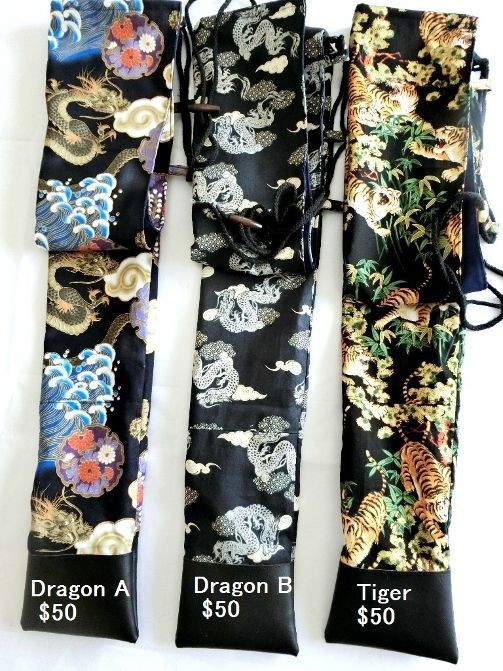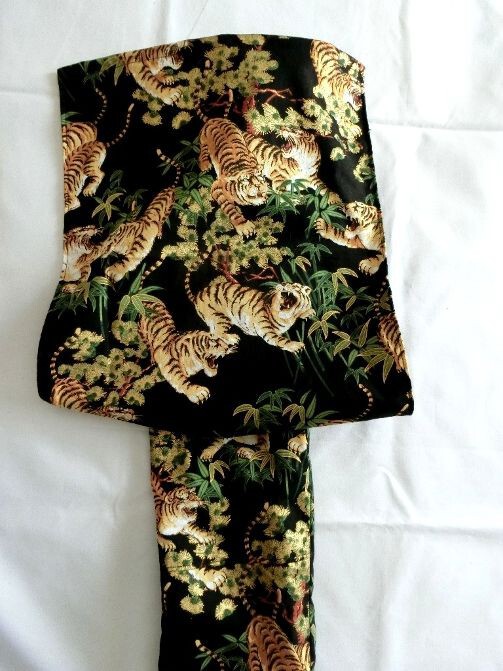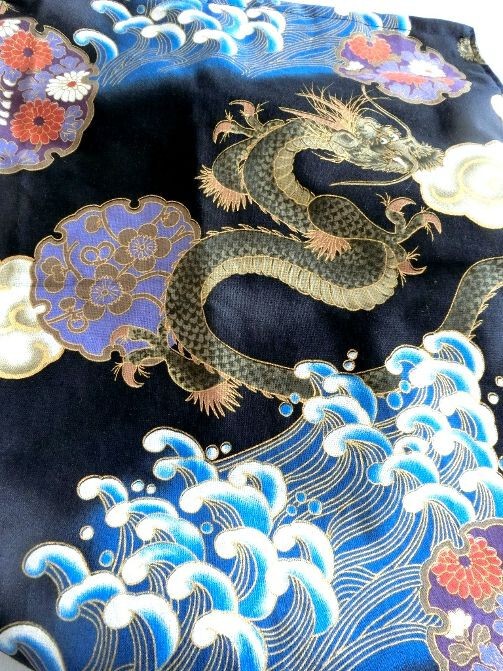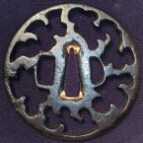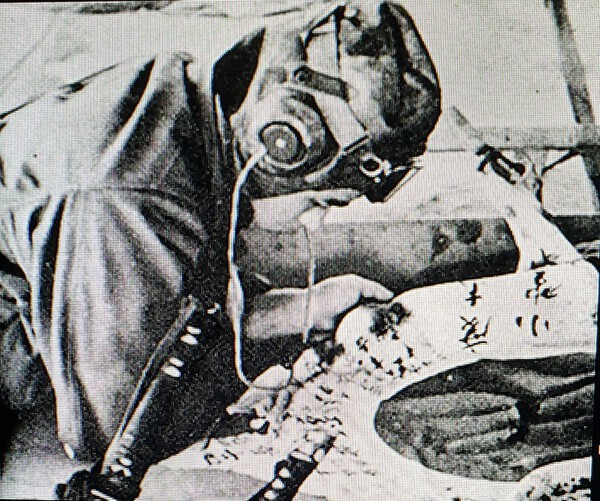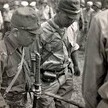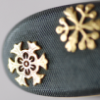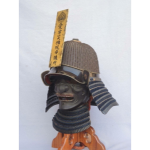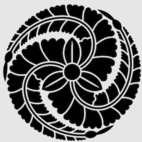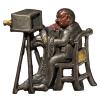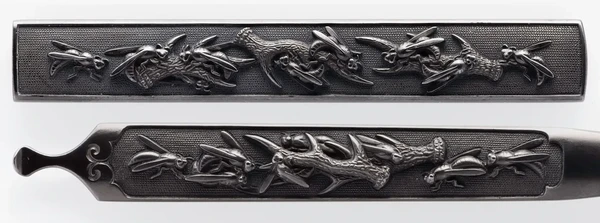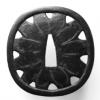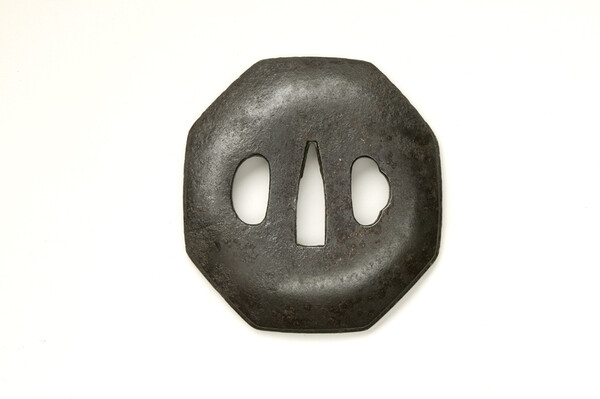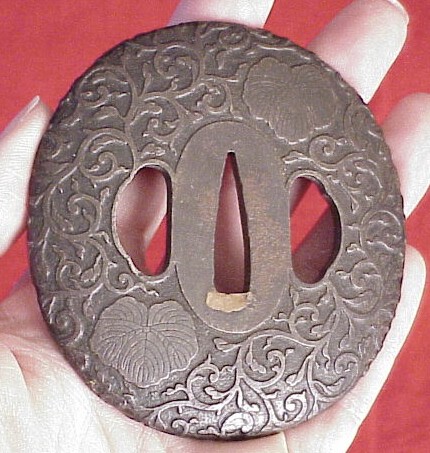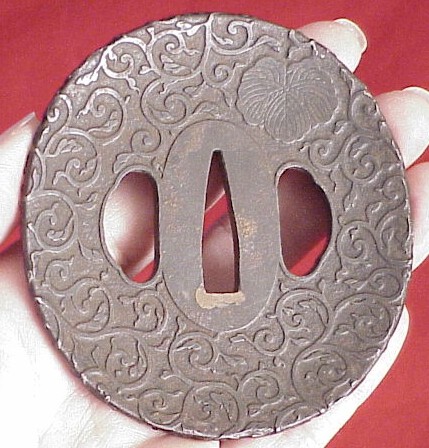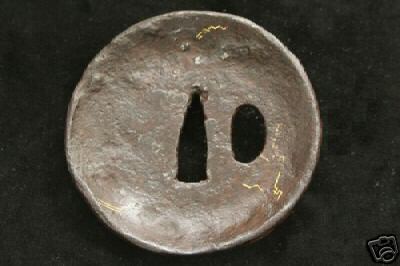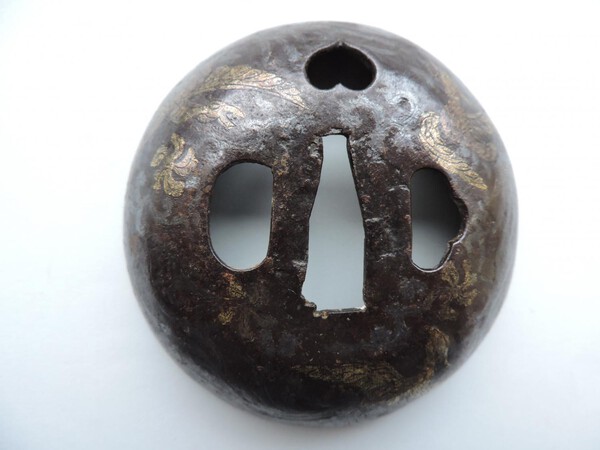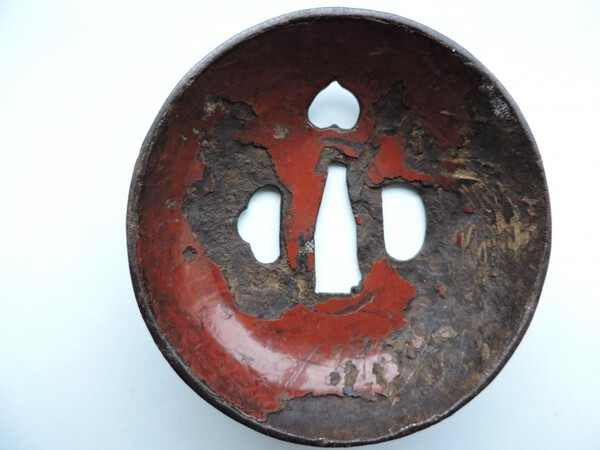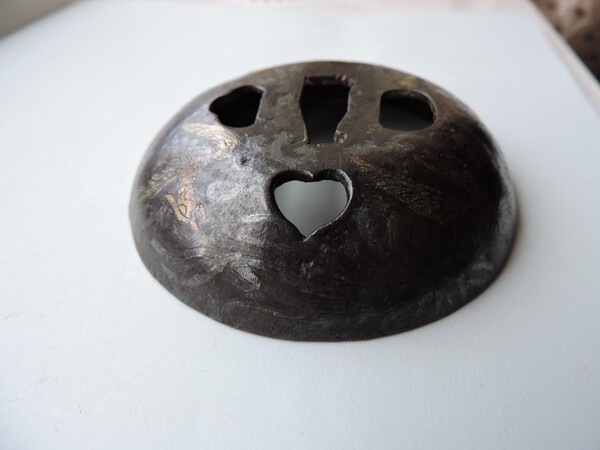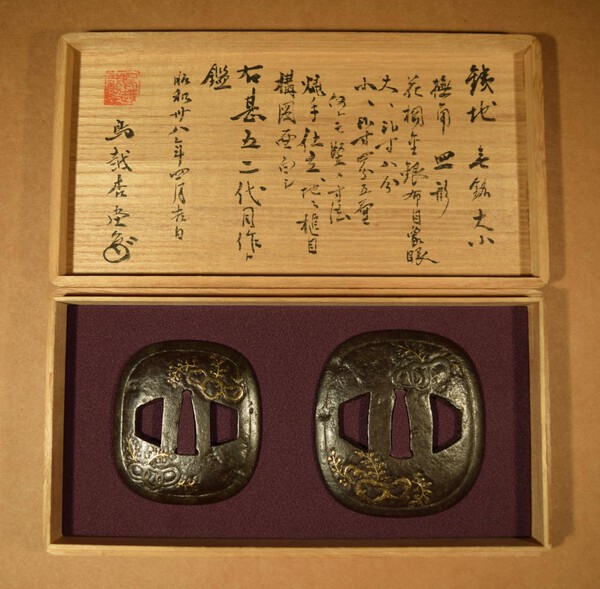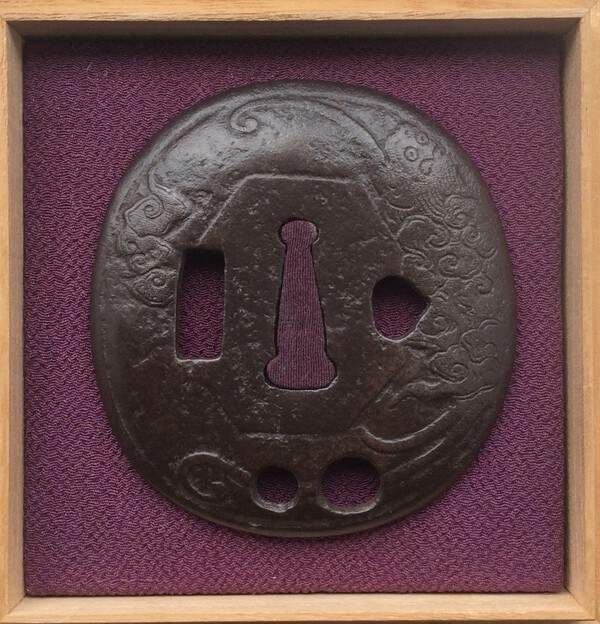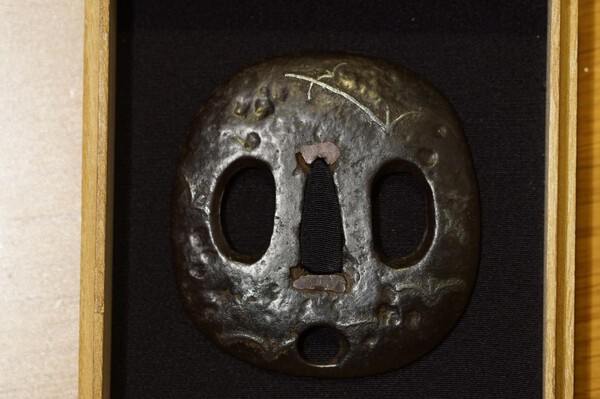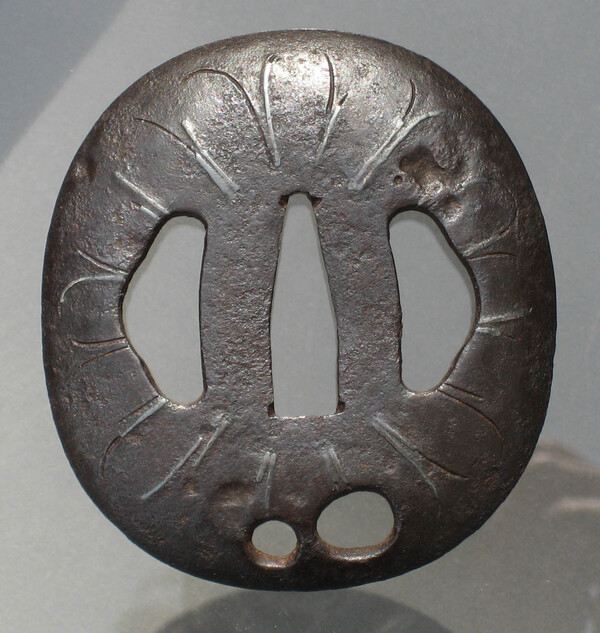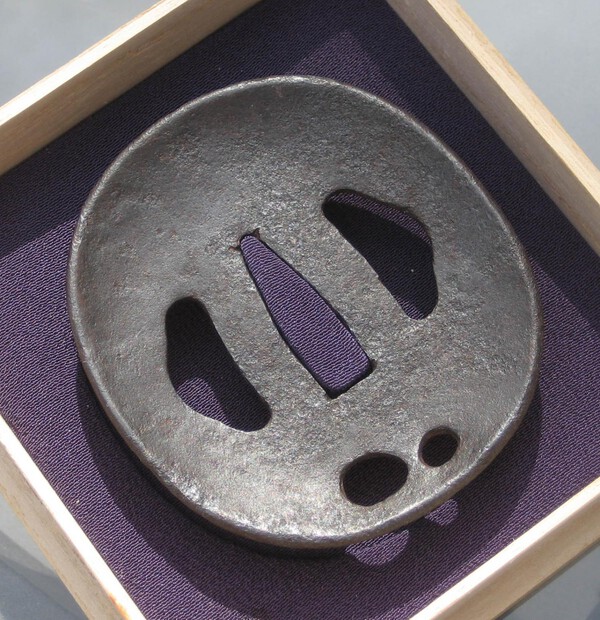Leaderboard
Popular Content
Showing content with the highest reputation on 09/13/2021 in all areas
-
Sunny I didn't say that you are terrible, I said the video's are. As mention in the other thread Nmb is a place full of people that love Nihonto and want to respect and preserve them. My sword training is with a Sensei and is purely for my own personal development and not to show the world on youtube. I love doing tameshigiri too but with Chinese made katana and tatami and sometimes pool noodles too. Im not a master but it is obvious to me that you havnt had a lot of training with a sensei and this puts your swords and you at higher risk of damage. You say they were made to be used but when they were made I doubt the smith had in mind somebody cutting noodles in their lounge room on youtube. Surely you can understand why people are against this. You said in the other thread that I have a pathetic life but I have a life that I wouldnt swap with anyone and consider myself the luckiest person in the world. Sorry but I care more about the swords that you are unfortunately the custodian of that weather you get more youtube views.5 points
-
4 points
-
Item No. 115 Iron Tsuba with brass 6.76 cm x 6.24 cm x 0.40 cm Iron Tsuba - Shingen style wire work in brass A wakizashi size tsuba with neatly applied wire work . Unlike a lot of Shingen pieces , this shows a restrained simplicity , and is all the better for it. This shows signs of having been mounted and so was apparently made for the domestic market - a case of ' less is more '. Item No. 116 Iron Tsuba with silver , gold and shakudo decoration - 7.66 cm dia. x 0.55 cm Subject of sliding doors in a wall or gate . Signed Nara Saku. Unusual subject for a Tsuba - the doors are partly open , to reveal whatever your imagination says lies beyond... NBTHK papered4 points
-
Yours to do as you want. But this forum consists of collectors and guys who don't even speak over a Japanese sword in case they get droplets on it, and who won't put a sword on a hard surface. Not hard to work out that watching someone cut household things with it would not go down well. Really, don't hold it against guys who hold these things in such high regard. Posting stuff like that publicly was never going to end well. It's nothing personal. Topic closed.4 points
-
Edward, same I'm a young gun in the hobby and sometimes shoot from the hip. Chris W., I really agree. The experience of owning, holding, staring into the details, looking at the parts, how it all goes together, learning how to handle it, how to care for it, comparing nakagos and even rust colors...all of it...no reading does the visual and tactile knowledge gained that way and it's integral to the spark that grabs hold of someone or throws wood on the interest fire to keep it burning. Then to have multiple blades to compare makes the difference of features so much more evident...same with having blades of different quality as your collection evolves. Also, on the life advice front, I would never suggest a young man building a life toss 8k at a sword unless they truly can afford it. Like any hobby I also wouldn't ever suggest using large debt to pursue this hobby. Buying comfortably within your means is important, and for beginners pieces don't need to be perfect to enjoy and just try and get the best you can with what you can afford. There's honor in the hunt/quest even with lower end pieces. They still have a history. One can always trade up later when you're tastes/interests evolve and have more "fun" money.3 points
-
Oh man. I'm not trying to jump on the beat up on you bandwagon but you are definitely on the wrong forum to say that these antique works of art are meant to be used. Theory goes we are caretakers keeping them safe to pass one to the next generation. Machetes u buy at Walmart are meant to be used...3 points
-
There are signed Sueyuki, typically they are offered in 10mil yen price range though. To me Sadatoshi attribution denotes Heian to mid Kamakura sugata and Seuyuki is accordingly mid to end (1250-1310) period. In both cases the craft is very antiquated with minimal trace of influences as established by Rai Kuniyuki and other more fashionable school. Obviously condition issues are such that even well preserved work will have somewhat non-uniform jigane, but: The jigane is in general weaker compared to Kuniyuki, the ji nie is less distinctive, the color is noticably whiter and hazier. As in Sanjo work, hamon is ko nie based, there can be prominent masame close to ha producing hotsure/uchinoke and tobiyaki tend to line up with masame lines. There can be rather rough ara nie, though hamon's nie size is very well controlled. Nioiguchi is quite bright, though in books its other qualities tend to be emphasized more. Yakiba can be a strange (antiquated) mixture of ko choji, togari and almost Yamato looking "belts" of nie. Utsuri like in this work can be quite prominent, but its not as clearly defined as in later works (midare? jifu?). Boshi has prominent hakkikake but is rather thin when it begins. I considered waiting a bit more, but I felt bad about people going into completely different directions, maybe in part relying on my answer to Enju quess.2 points
-
I think there are at least 6 signed tachi by Sueyuki. I have 5 on record and I know about the 6th one in Jūyō session 39 but unfortunately I don't have that book yet. There is long one (83,2 cm) at Itsukushima Jinja, the Jūyō 58 one is 80,4 cm and I know 3 signed tachi (77 - 71 cm) with Tokubetsu Hozon papers. For Sadayoshi I have only found 1 signed tachi that is in the collection of Tokyo National Museum. However needless to say they are extremely rare as those are the ones I have found after years of searching. For comparison I have 27 signed pieces for Sadatoshi.2 points
-
2 points
-
2 points
-
2 points
-
Jan, SAYAGAKI on a SHIRASAYA are certainly o.k. and look nice.....when written by a Japanese! Any other attempt of DIY will not be an improvement, in my opinion.2 points
-
There won't be 'rebuttal' videos as we are interested in preserving old Japanese swords, not playing around with them like manchildren. Good luck buying/selling on here in the future.2 points
-
1 point
-
1 point
-
1 point
-
1 point
-
Thanks again for sharing your expertise Bruce. As this field of collecting is new to me, I had never heard of defacing arsenal stamps. Fake signatures - that I can see the crooked logic behind. But to remove a stamp, and have a signature of a Showa smith, I cannot see the logic. But then you could also bring the signature into question. I think I will just get a couple of seppas and enjoy it as a showato - this was the reason for purchase in any case :-) But I can feel an itch to have an ancestral blade beginning 😉1 point
-
Adam, I can understand you completely. I was no different. There are always a lot of emotions involved in purchasing decisions. But emotions must not cloud the view. Even today, after more than 30 years, I am not free of them. If I am extremely enthusiastic about something, I leave myself a few days until I have cooled down a bit. Often one sees then things, for which one was blind in the first enthusiasm. I like the shape of the sword. The blade has a proud, confident shape. And if the shape is good, that's always a good sign for the rest of the blade's qualities. That's why I was surprised myself that the Nioiguchi presents itself so weakly on the reflection pictures. It just doesn't fit. Sue-Seki smiths in particular usually have a dense, strong nioguchi hardened - even if not always in luminous appearance. But with this blade, I can't shake the suspicion that the strong hadori is meant to cover up the weakening hamon. Why this is so, I do not know. Possibly due to external influences, such as heat. But this is speculative and can not be judged only from the photos. And as I said, I think that this blade, especially with the existing Koshirae was used by a Iaidoka and I fear that this sword is essentially aimed at clientele in this area. Finally, a word of advice, especially when it comes to the high cost of appropriate quality! Why necessarily Katana? With a little patience you can find for the price of this presented Katana quite a very good Wakizashi from a possibly quite well-known smith or school.1 point
-
1 point
-
1 point
-
1 point
-
The duel in “Hara Kiri” has got to be one of the most perfectly shot scenes in cinema history…. The rest of the film is pretty bloody good too. https://m.youtube.com/watch?v=rn4FY_k9FyE&t=1s1 point
-
1 point
-
Based on this thread, and the many others that we have built on Showa 22 and Komonjo, these two believe that building a great reputation is the path to business success (just kidding here...). For some reason, they both have lots of non discerning customers and do a lively business. Unfortunately it is destructive to the greater hobby, as they damage healthy swords and misrepresent false ones. Sadly, despite the decades long complaints lodged against both of them on this thread, they continue to thrive.1 point
-
Hi. I placed an add in the Wanted to Buy section of this forum looking to buy a kabuto. I received a personal message from a member here stating he knew someone selling one and provided me with an email address. Contacted the person who sent through some photos of a kabuto but no price. I enquired and he quoted £2100. What He didn’t know was that I knew if was on ebay and located in Japan. Here is the ebay link. https://www.ebay.com.au/itm/Antique-Edo-Period-Kabuto-32-Ken-Suji-Helmet-Samurai-Armor-Maedate-Free-Ship-/384241427651?mkcid=16&mkevt=1&_trksid=p2349624.m2548.l6249&mkrid=711-127632-2357-0 This person, via this forum, offered me a kabuto that seems wasn’t his to begin with at £500 more than the asking price on ebay. So this is a reminder that unethical people lurk here. The forum member who initiated the contact is not active with no posts, just lurking in wait for the unsuspecting. Mark1 point
-
Johan, I think that is really quite nice! More comment: SHIRA-SAYA means 'white SAYA', so yours is correct! Fresh HONOKI is also white. I have no idea if poplar has similar properties compared with HONOKI, but in any case, the wood should not be treated. A SAYASHI will NEVER use sandpaper on a SAYA! There is always a risk that some tiny particles may find their way into the SAYA and start their destructive work on the steel! There are some videos on YouTube where you can see that ONLY cutting tools (KANNA, KIRIDASHI or KOGATANA, and NOMI) are used in SAYA making!1 point
-
My top 5, "The Sword of Doom," "Tasogare Seibei," and "Shichinin no Samurai," "Ran," and...maybe a tie between "Koruri Ookami" and "Zatoichi" (in no particular order, and also obviously not all Kurosawa films, still great though) I'm going to be on the look out for this book! -Mario1 point
-
1 point
-
I know warnings get posted on every sale page. The scammer didn’t get me but there are inexperienced members here who may not be aware that they are lurking here, hence the warning, more current.1 point
-
That was painful to watch. Shows the importance of who Nihonto should and shouldn't be sold to if it can be helped. Seeing an old sword being used by someone with no training on pool noodles on youtube is just painful.1 point
-
Oregon Post Office does seem to have a way with things. I remember sending you something that took on a fair amount of damage. The only other item worse off was a package to the UK that had been stabbed clean through, but somehow missed hitting anything other than the negative of the sukashi tsuba inside.1 point
-
Hi David, Thanks for the comment, I agree having examined the tsuba further on the back of the previous comments by members I would say late Owari. I do like and appreciate this style of sukashi tsuba. Best regards1 point
-
Well, There's two problems - first, boxes often need to be big enough to stick the customs forms on (depending on the service it was sent by). In addition, sometimes a slightly larger package tends to not get lost, damaged less, etc. And... if the seller has a "system" that works for them, has prevented damage claims, etc it really can be a major pain to do something different. Second, damage is a thing - envelopes can get mutilated (and lost), and even boxes require some thought - here's a couple of my favorite "receptions" (NOT!! - I almost had a heart attack when each of these showed up, as they both had 6 figures worth of kodogu in them for me to image): https://www.facebook.com/permalink.php?story_fbid=1462966100425400&id=266005023454853 In the first case, the sender did everything right, but UPS tried real hard to smash it (and it arrived in the winter so I had to wait a number of hours for it to warm up before I could even open it for inspection to prevent condensation issues). In the second case, the shipper probably could have put this box in the next bigger one and got a better result - again, keeping your goodies away from the corners/sides of the box generally gets you better results... I'm sure some of you guys can probably attest to the crazy packaging I personally use, but I've shipped a lot of small valuable items all over the world/have received a fair number as well and I only do it in response to the damage to boxes I have seen/had to deal with.... I'd love to use less, but until the package carriers of the world stop trying to crush things, that's not gonna happen.... Too bad guys like Pelican/sks, etc haven't addressed this market with lightweight plastic cases so it all could be reused (their normal cases aren't really right for this - tooo heavy) Best, rkg (Richard George)1 point
-
BTW Yojimbo is on HBO/MAX for the time being. Last Man Standing (1996) A 1996 remake of Yojimbo starring Bruce Willis and Christopher Walken, and written and directed by Walter Hill. Last Man Standing moves the samurai story into a prohibition era town in Texas, where gangsters, bootleggers and prostitutes abound.1 point
-
So, I just got one of my Type 97's back from my local Koshirae repair guy after he performed a Tsuka re-wrap. This is a Hattori Masahiro (of Takayama Forge fame) Kai Gunto that I purchased a few months ago. The Ito was torn and was generally in bad shape - needed a re-wrap. Randy has a solid reputation for doing excellent Koshirae restoration work and I'm very happy with the results (and his price was very reasonable). I'm fortunate that he resides in my area, so I did not have to ship the sword to him. Attached are Before and After photos.1 point
-
You would be surprised with the incompetence of some delivery services. This is how a seller covers their rear in case of an unfortunate accident.1 point
-
Truly sorry to hear about the package loss Ben. I most often use USPS Express insured (as I seems safest when keeping shipping times to a minimum). Hopeful that your package does surface soon. Best regards, Ray1 point
-
I agree with Stephen; for things of value within the US it has to be registered mail from the post office. Beyond what Stephen said, if the package spends a night in a post office it has to be in a safe. And it isn't expensive. I'm about to ship a large tube with 5 swords and some boxed fittings to the east coast. 10 pounds and $20,000 on value will be about $108 with full insurance. Registered can't get lost; as my guy at the PO says, "If you lose registered you lose your job." Grey1 point
-
1 point
-
Dear Bob, when we see a wasp on tosogu it is often wordplay (which the ancient Japanese loved). One of the more common combinations is wasp and monkey which in Japanese are homophonous with “granted fiefdom” and “lord” respectively. So a monkey grasping a wasp means the good fortune of being made the lord of a fiefdom, but a monkey simply watching or ignoring a wasp means something like “don’t waste your opportunities”. See the following NMB thread for more info on that theme: https://www.militaria.co.za/nmb/topic/30375-ishiguro-masatsune-2nd-generation/ In the case of your tsuba Item No. 104, wasp can be read as Hou (or Hachi) in Japanese and deer can be read as roku (or shika). “Hou” plus “roku” makes Houroku which sounds like the word for the “stipend or salary” that a Samurai receives when starting out as a warrior. This makes your tsuba an excellent tsuba for a gift to a new Samurai. Darcy has another beautiful example and explanation of this theme here: https://yuhindo.com/goto-joshin/1 point
-
Piers, Western anvils have a pritchel hole which you can use. There are also tools that go into the hardie hole that have smaller or bigger holes so you can punch through. Japanese swordsmiths may have similar tools. The punches (or TAGANE) are conically shaped and mostly have a blunt tip. Holes are usually drifted from both sides and the excess filed flat, so there are no 'cushions'. The same applies to drilled MEKUGI-ANA: the 'cushions' have to be filed away, otherwise there would be an obstacle for the TSUKA. Jacques is correct when he says that it is often difficult or even impossible to differentiate between a drilled and a punched MEKUGI-ANA. But on closer inspection and a magnifying glass, you may often see a tiny difference in the respective hole, just as Guido mentions. I have seen drilled holed with a "step" as a result of unprecise drilling from both sides - the Japanese did not have power tools, and drilling steel was probably not at all easier than punching a hole in a red-hot NAKAGO. The advantage of drilling was that it could be done at a much later stage of finish, and I think in later times it was probably often done by the TSUKAMAKI-SHI for easier adapting of the TSUKA.1 point
-
Hi Les, I certainly do not recall seeing any Jingo daisho either in person or published apart from the set you have and suspect they are very rare indeed. I agree that yours are unlikely 2nd master and more probable 3rd or 4th. Great find. Dirk - a truly great tsuba with a very powerful atmosphere and the portrayal of the geese is just perfect and couldn’t be anyone other than the first master. Im pleased too see your still enjoying that one. Kindest regards Michael1 point
-
1 point
-
I believe that I have posted this tsuba before. It is decorated on the inside with red lacquer. On the outside are three engraved phoenix in silver and gold gilt (difficult to see in the photo). The boars eye (heart) piecing is also large for a tsuba. What religions do you no that are based on three deities (father, son and holy ghost), believe in rising from the dead (or ashes) and depict the #2 deity with a large heart? I believe that this tsuba belonged to a Christian (Roman catholic). Regards, John1 point
-
1 point
-
1 point
-
1 point
-
Yes, about 99% of the time. With the Japanese rigid curved cutting blade, the European binding advantages of the bell are mostly lost. The Japanese aesthetic sense takes over, and you have the bell inverted to that of its western counterparts. That said, I do believe I have seen at least one Namban Wan (nice rhyme to that) which was made to be bell up. It is the exception, and was one to fit the notion that it was foreign made for VOC trade.1 point
-
Most dome shaped tsuba (wan tsuba), come from the Kyushu area and reflect foreign influence. Ken, as a former fencer, you should appreciate the influence- though the Japanese tended to invert them. It was nice to see Jean's Hizen example again. The best ones seem to be Higo / Hizen. I came into ownership of a nice Higo Jingo example this year. Most of the Higo Jingo ones are by the sandai, but the life of the nidai and sandai overlapped greatly. This is a nice later nidai example, where much of the appeal is tactile. image attached.1 point


